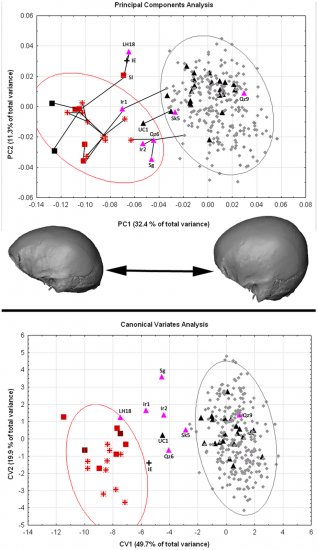Christopher M. Stojanowski
Source - http://www.sciencedirect.com/science/article/pii/S0047248414000876

Journal of Human EvolutionDOI: 10.1016/j.jhevol.2014.02.018
Abstract
The Iwo Eleru site in Nigeria preserves the only terminal Pleistocene fossil from tropical West Africa. The peoples of this region contributed to significant population movements throughout the continent during the Holocene. As such, characterizing the phenotype of Late Pleistocene West African populations is critical for disentangling the evolutionary signatures of a highly complex African population history and structure. Previous research approached the calvaria's morphology from a paleoanthropological perspective, noting its mosaic of archaic and modern neurocranial features and distinctiveness from Pleistocene fossil taxa and contemporary modern human samples. In this paper, I compare Iwo Eleru with contemporary Late Pleistocene Africans and also consider the specimen's affinities with Holocene populations of the central and western Sahara, Nile Valley, and East Africa. Craniometric data were recorded for 22 neurocranial dimensions and subjected to principal components analysis and Mahalanobis distance estimation. Multidimensional scaling of distances indicated that Iwo Eleru fell outside the observed range of variation of other terminal Pleistocene supra-equatorial African populations, confirming previous results that documented its divergence from Neanderthals, Upper Paleolithic Europeans, and modern Africans. The calvaria was also distinct from Holocene Saharan, Nile Valley, and East African populations, which suggests limited West African input into the Sahara during the African Humid Period. Results presented here bolster previous research that suggested Iwo Eleru's anatomy reflected either admixture with archaic humans or the long-term survival of populations with more archaic neurocranial anatomy until the end of the Pleistocene.